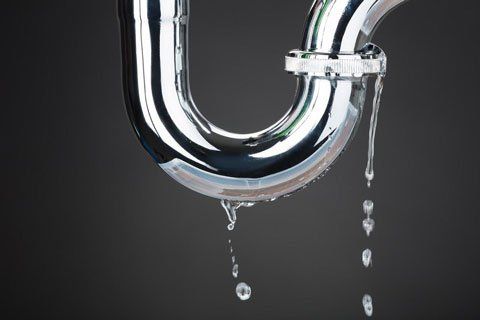Presented here in the next paragraph you can discover lots of superb answers on the subject of Detecting hidden plumbing leaks.

Early detection of dripping water lines can reduce a possible disaster. Besides conserving you money, it will decrease the irritation as well as aggravation. The minute you locate a leak, calling your plumber for repair work is the most effective solution. Some little water leakages may not be visible. If you can not find it with your nude eyes, here are some hacks that assist.
1. Check Out the Water Meter
Every house has a water meter. Checking it is a surefire way that assists you find leakages. For beginners, switch off all the water resources. Make certain no person will certainly flush, use the faucet, shower, run the washing machine or dishwasher. From there, go to the meter and watch if it will change. Because no one is using it, there ought to be no movements. If it moves, that indicates a fast-moving leak. If you identify no changes, wait a hr or two and examine back once again. This means you may have a slow-moving leakage that could even be below ground.
2. Inspect Water Consumption
Assess your water costs as well as track your water usage. As the one paying it, you need to observe if there are any kind of discrepancies. If you find sudden changes, despite your intake coinciding, it suggests that you have leaks in your plumbing system. Bear in mind, your water bill must drop under the exact same range monthly. A sudden spike in your costs suggests a fast-moving leak.
A consistent increase every month, also with the same routines, reveals you have a sluggish leakage that's also gradually rising. Call a plumber to thoroughly examine your building, particularly if you really feel a warm area on your flooring with piping below.
3. Do a Food Coloring Test
30% comes from commodes when it comes to water consumption. Examination to see if they are running properly. Drop specks of food shade in the container and wait 10 minutes. If the color in some way infiltrates your dish throughout that time without flushing, there's a leak between the storage tank as well as dish.
4. Asses Outside Lines
Do not fail to remember to inspect your outdoor water lines too. Should water permeate out of the link, you have a loose rubber gasket. One tiny leakage can lose heaps of water as well as spike your water costs.
5. Evaluate as well as Evaluate the Situation
Homeowners should make it a routine to inspect under the sink counters and also inside cupboards for any bad odor or mold and mildew development. These two warnings suggest a leak so timely attention is called for. Doing routine inspections, also bi-annually, can save you from a significant issue.
Inspect for stainings and weakening as many appliances as well as pipelines have a life span. If you believe dripping water lines in your plumbing system, don't wait for it to intensify.
Early discovery of dripping water lines can minimize a possible disaster. Some tiny water leaks may not be visible. Inspecting it is a guaranteed means that aids you uncover leakages. One little leakage can lose lots of water as well as surge your water bill.
If you presume dripping water lines in your plumbing system, do not wait for it to intensify.
How to Know If Your Home Has a Hidden Leak
Water Meter Reveals Inexplicable Water Usage
If you’d like to test whether or not there’s a leak somewhere in your home, you can do this using your water meter. Here is how to conduct the test:
Don’t use any water in your home for at least 30 minutes; this also means not turning on faucets or water-using appliances.
Go outside, and check your water meter for activity.
If your water meter shows that there was activity, even though no one was using any water, this proves that there is a leak in your home.Visible Mold or Mildew Growth
Leaks behind walls create moist, dark environments that allow mold and mildew to grow and thrive. Eventually, you might see mold growth forming on the wall closest to a hidden leak.
If mold is growing in an area that receives a high amount of moisture, such as a bathroom, it may simply be an indication that better ventilation is needed. However, if you see mold growth on a wall or the ceiling in an area where you would not expect, you probably have a hidden leak.
Musty, Mildew Odor
Sometimes you might not be able to see the mold or mildew that is growing as a result of a leak. However, the smell can give the problem away just as easily. If you catch a whiff of something musty, there’s a good chance that old water is collecting somewhere in your home that you can’t see.
Stained/Warped Walls, Ceilings, or Floors
When your home soaks up water, a variety of red flags can become visible, including ceiling stains, bubbling drywall, warped walls, and sagging floors. While these issues can be caused by excess humidity, they can also be signs that a pipe or plumbing connection has started leaking behind your walls.
Inexplicably High Water Bill
After a while, you get a general sense for what your water bill should be. If you own a pool or sprinkler system, your bill will tend to be higher during summer. However, if you receive a water bill that seems especially high, and you can’t figure out what caused it, then you may have a hidden leak somewhere that’s increasing your bill.
https://www.plumbingjoint.com/blog/2019/july/how-to-know-if-your-home-has-a-hidden-leak/

I stumbled upon that review on Top leak detection hacks while looking around the search engines. Do you know about somebody else who is sincerely interested in the subject? Please feel free to promote it. We value reading our article about Finding hidden leaks.